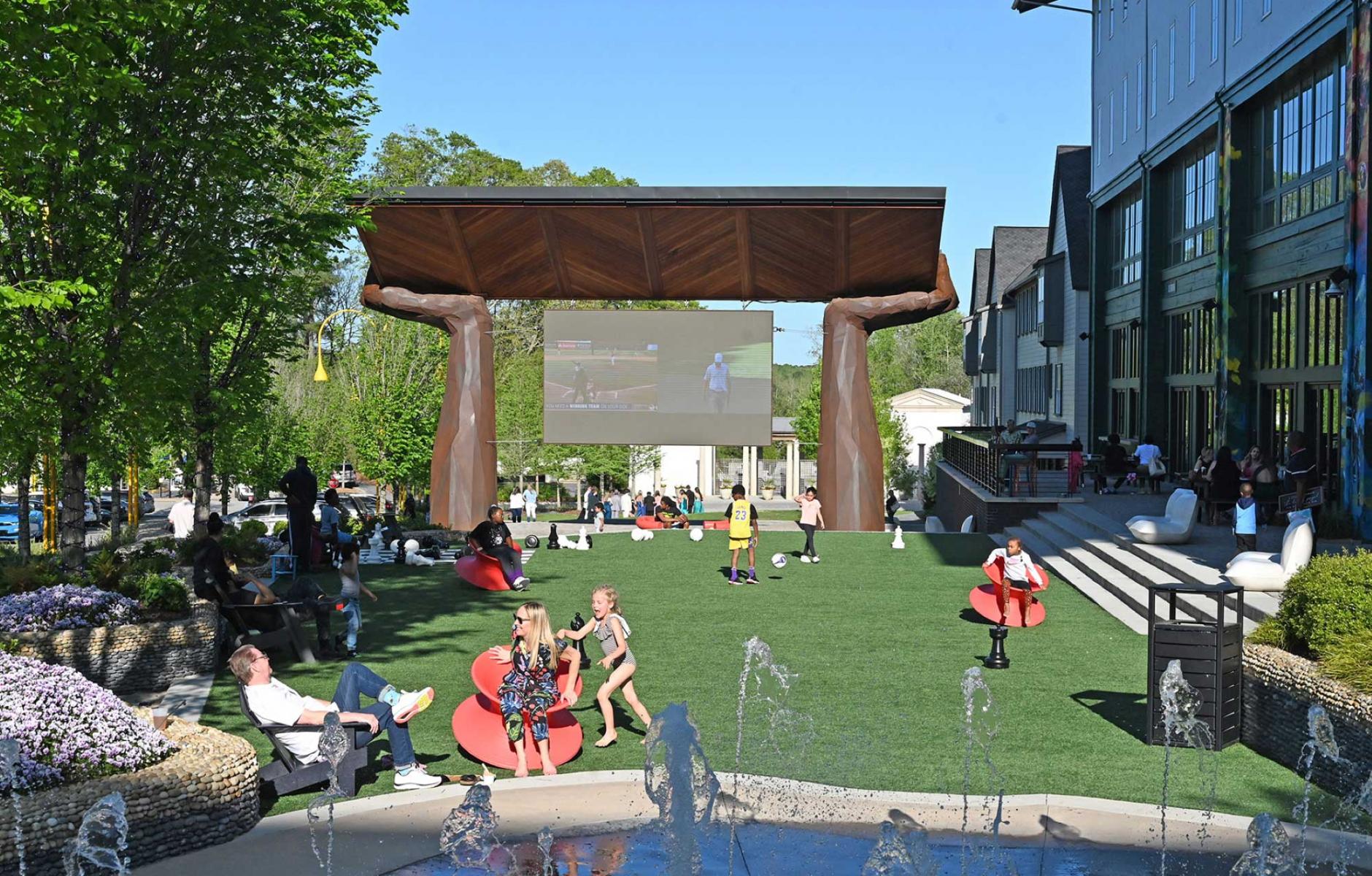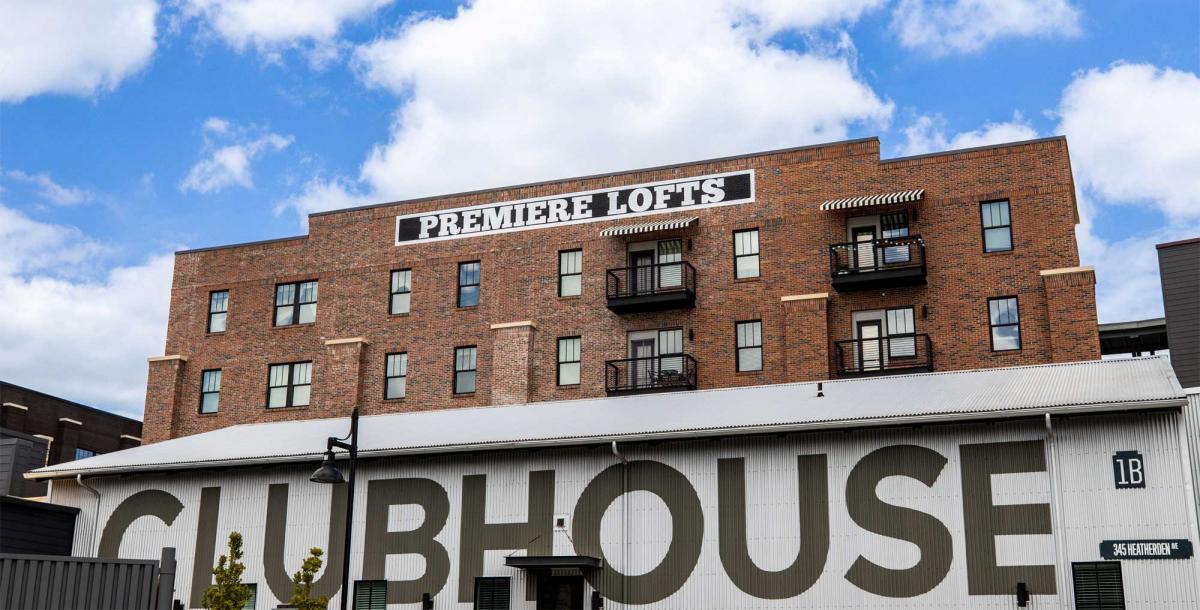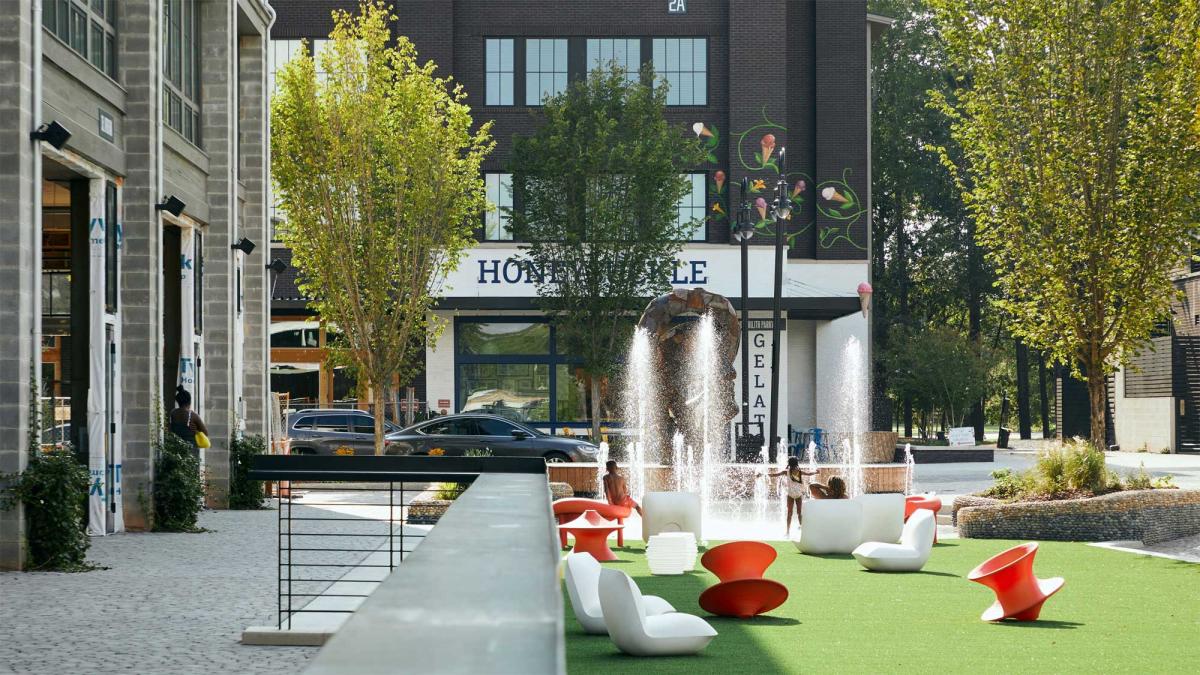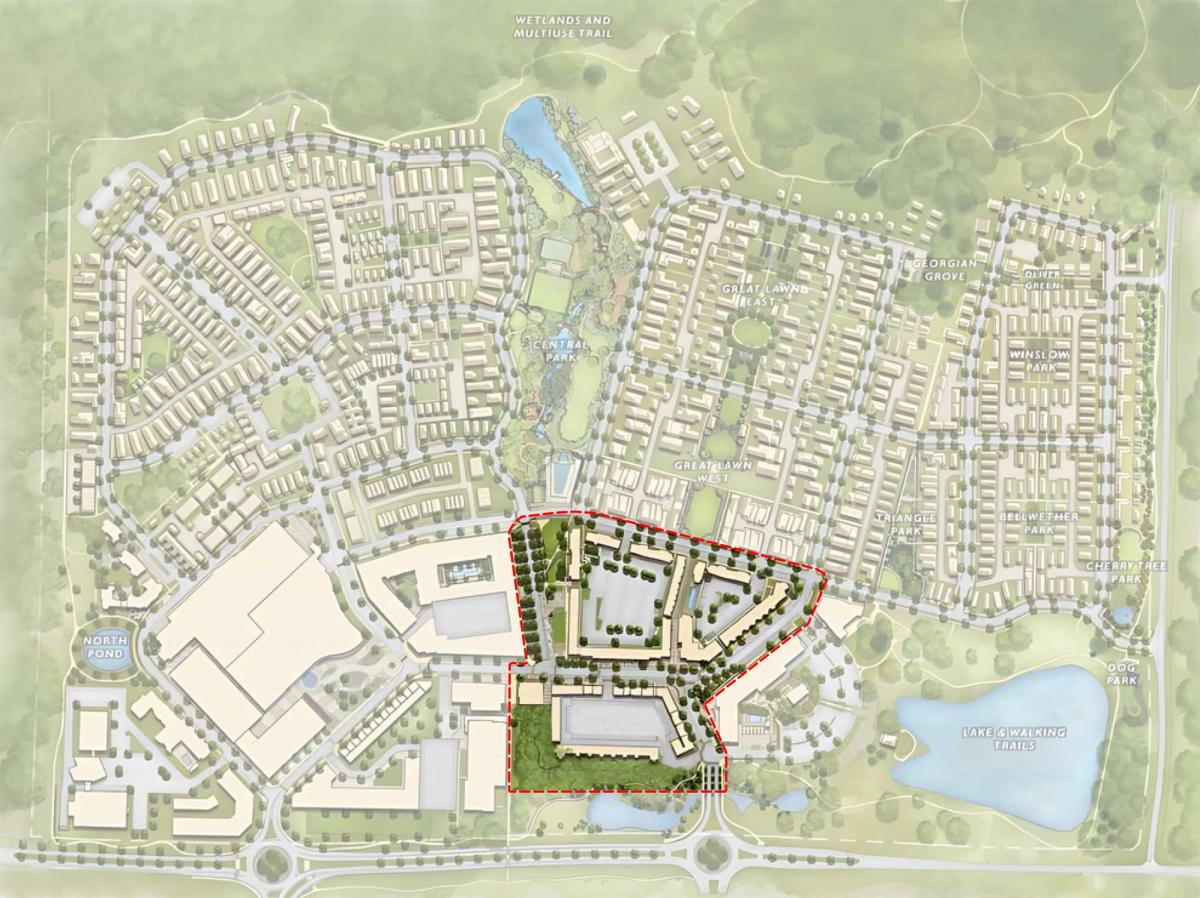
New model for sprawling Georgia county
Located across from the largest film production studio on the East Coast, Trilith in Fayetteville, Georgia, offers a new model for housing in a county dominated by low-density sprawl.
Designing a mixed-use town in this environment presents challenges, notably building walkable urbanism while accommodating a large number of automobiles, because as soon as residents leave Trilith, they need a car. Financial constraints dictated surface parking—the developer could not afford structured parking while charging rents close to comparables for the area.
The town center provides strong placemaking. One of the primary markets is film industry employees, who are accustomed to a high standard of urban stimulation. If the quality of the public realm pleases that market segment, it will meet the requirements of a wide swath of the population. And that creates a destination, because there is no other urbanism for miles around.
The Trilith Town Center Lofts, designed by Nequette Architecture & Design, comprise 263 rental flats, 35,000 square feet of commercial space, a central public space, and 616 surface parking spaces on seven acres, for a net density of 36 units per acre. “The Central Plaza, located at the edge of the Town Center, was a joint effort between Nequette, HGOR landscape architects, and Atlanta-based artist William Massey,” Nequette explains. “Massey’s massive metalworks sculpture creates a covered stage area for community gatherings, including concerts, movies on the lawn, and more.” Lew Oliver Inc. designed the community plan.

Fayette County, which was entirely rural before 1960, has developed in a form of mass suburbanization. Trilith, with 235 acres—about half of which is preserved as green space—is designed to reverse that model. As the designers explain:
- Local leadership in Fayette County and the City of Fayetteville recognized the economic vitality, community stability, and environmental health fostered by this model. Inspired by Trilith’s success, they began rethinking their development strategies, shifting from traditional suburban sprawl to a network of connected towns and villages.
- Trilith has emerged as a model, encouraging other market-rate developers to pursue investments in new town and mixed-use projects, proving that these communities can thrive even in traditionally car-dependent, rural regions.
- As public awareness grows around the benefits of walkable neighborhoods compared to sprawling developments, the market is shifting, with Trilith setting the stage for the broader adoption of these principles.
The diversity of uses and people affects the lives of residents and visitors. “For our family, this community, the Trilith community, is unique because of all the different types of people here,” says Kara Keifer, a resident and business owner. “I love the fact that my kids go to school in the neighborhood. We walk to our church. We walk to dinner. It's just a great place to meet people of all ages and diversity.”

The town has appealed to a broad market of buyers and renters, not just film people, notes Rob Parker, who was president and CEO of Trilith Development from 2016 to 2025.
The placemaking vision combined colorful murals, hand-painted storefronts, sculptural civic installations, and lush landscaping to create an immersive environment, the designers note. This aesthetic sought to connect the development to the nearby Trilith Studios, which is all about the magic of storytelling.
The mixed-use buildings are inspired by historic Atlanta industrial architecture and Fayetteville’s agricultural vernacular, defining the main street with four-story structures. As the site slopes toward the residential neighborhood, building heights reduce to three stories with sloped roofs and first-floor porches, blending with the context of adjacent homes.

Designing blocks with active uses, given the market constraints, was a puzzle solved through extensive collaboration among the developer, town architect, city officials, and engineers. “The team opted for single-loaded buildings along block edges and larger surface parking areas within blocks, sacrificing some building efficiency to meet the financial goals,” Nequette explains. The parking, although plentiful, is very skillfully hidden in Trilith.




